 Larus cachinnans in Poland
Larus cachinnans in Poland
(last update: August 01, 2021)
Marcin Przymencki
Klaudia Litwiniak
Mars Muusse
Caspian Gull cachinnans: Jankowice
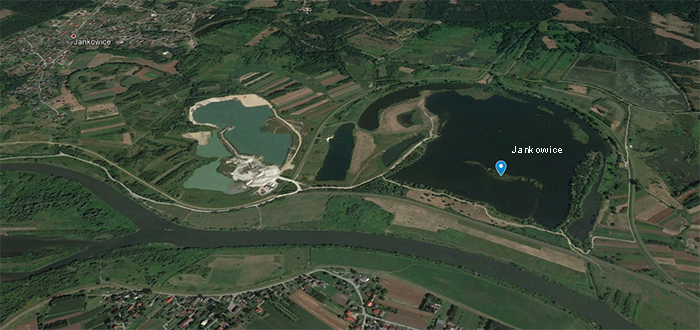
Jankowice: 50°02'05.9"N 19°28'08.8"E
- Jacek Betleja, Mateusz Ledwoń
For questions mail to: betleja@muzeum.bytom.pl
Breeding species:
- Larus cachinnans
- Larus michahellis
Habitat:
Jankowice colony is located in the Upper Vistula Valley in southern Poland. Gulls nest on an island at the reservoir formed after extraction. The island is covered with grass and trees. It is one of the oldest colonies in Poland.
Annual numbers:
| year | pairs |
| 2021 | 482 |
| 2020 | 365 |
| 2019 | 360 |
| 2018 | 308 |
| 2017 | 328 |
| 2016 | 285 |
Notes on breeding pairs:
First breeding pairs at Jankowice occurred in 1998. Since this time the number has been rising. There were also some pairs of Yellow-legged Gulls (pure and mixed ones), including a female ringed as a chick in Italy, which bred at Jankowice in 2004 with Caspian Gull female.
Ringing at Jankowice has been taking place for a few years. Here the team not only ring chicks and adults, but also do other studies, like putting GPS-GSM devices on Caspians. See THIS POSTER and THIS PUBLICATION.
==================================================================
Mixed colonies of large white-headed gulls in southern Poland
BY: Marcin Faber, Jacek Betleja,
Robert Gwiazda and Pawel Malczyk
IN:
British Birds 94: 529-534, November 2001
In the early part of 1999, we discovered a
small colony of large white-headed gulls Larus at a gravel-pit near Jankowice, on
the banks of the Vistula river in southern
Poland, about 50 km from Krakow. On 28th February, we observed six pairs of gulls there
which showed characteristics of the nominate race of Yellow-legged Gull L. cachinnans cachinnans ('Caspian Gull', hereafter
referred to simply as cachinnans). When engaged in the characteristic long-call
display, they adopted the 'albatross posture',
with head raised vertically, and wings raised
above and behind the body with the hand
unbent, which is characteristic of cachinnans (Mierauskas et al. 1991; Jonsson 1998),
while the calls were also lower-pitched than
those of 'Northern' Herring Gulls L. argentatus argentatus (hereafter referred to
simply as argentatus). During a subsequent
visit to the colony, on 17th April, when the
gulls were nesting, we also observed two
individuals of the Mediterranean race of
Yellow-legged Gull L. c. michahellis (hereafter referred to simply as michahellis).
At the Jankowice colony, there were 11
occupied nests in May 1999, while some 40
nests were found in both 2000 and 2001. We
visited colonies of large gulls elsewhere in
southern Poland, including one of about 120
nests (at Tarnow) and two each of about ten
nests (at Goczalkowice reservoir and
Czorsztyn reservoir), and we estimate the
current breeding population of cachinnans in southern Poland to be approximately 180
pairs.
During three years of study at Jankowice,
Tarnow and Goczalkowice reservoir, we
managed to capture 85 gulls, which we
ringed, measured and photographed (see plates 287-297), and of which we compiled
detailed descriptions. Most (77.6%) showed
characters of adult or subadult cachinnans (plates 287-289), while five individuals
(5.9%) were identified as michahellis (plates
290 & 291). We did not find typical argentatus in these breeding colonies, but 16.5%
of the gulls which we examined in the hand
showed features consistent with their being
hybrids. Most of those which we believe to
have been hybrids exhibited characters that
were intermediate between those of argentatus and those of cachinnans (plates 294 &
295). In addition, two individuals showed
features intermediate between cachinnans and michahellis (plates 292, 293, 296 & 297).
 287. Subadult Yellow-legged Gull Larus cachinnans of nominate subspecies cachinnans, Jankowice, southern Poland, 2nd May 1999. Note the very long and comparatively slender bill, and flat forehead. Orbital ring orange-red, while the iris appears dark at distance (but is yellowish with dense brown spotting at close range). Picture: Jacek Betleja. |
 288. Wing of adult Yellow-legged Gull Larus cachinnans of nominate subspecies cachinnans, Jankowice, southern Poland, 2nd May 1999. This individual has a typical 'ponticus' (Black Sea-type) wing pattern, with a white tip to P10 and extensive white 'tongues' extending into the black wingtip. Picture: Marcin Faber. |
 289. Wing of subadult Yellow-legged Gull Larus cachinnans of nominate subspecies cachinnans, Jankowice, southern Poland, 1st May 1999. Like the individual in plate 288, this has a typical 'ponticus' wing pattern. On the primary coverts, traces of brown confirm that this bird is not yet fully mature. Picture: Marcin Faber. |
 290. Adult 'Mediterranean'Yellow-legged Gull Larus cachinnans michahellis, Jankowice, southern Poland, 1st May 1999. Note the dark grey mantle, deep yellow legs and plain, pale yellow iris. Picture: Jacek Betleja. |
Details of captured gulls
In order to assign individuals to a particular
taxon, we used the following key texts:
Bakker et al. (2000), Garner & Quinn (1997),
Garner et al. (1997), Jonsson (1996, 1998),
Klein & Gruber (1997) and Neubauer &
Millington (2000). We also discussed the
putative hybrid individuals with a number of
gull experts, in particular Detlef Gruber,
Ronald Klein, Gregory Neubauer and Rik
Winters.
L. c. cachinnans The upperwing pattern was typical
of the western, or Black Sea, type, often referred to as
L. c. ponticus. Biometrics also supported our identification of these birds as cachinnans.
Key identification features were as follows.
Long, obvious, whitish 'tongue' projecting towards
the tip of the inner web of the outermost primaries, forming a clear contrast with the darker
mantle. Typically, a wide, complete black band
across both webs of P5 (primaries numbered
descendently, with the outermost being P10), sometimes with a black spot
on P4, too (plate 288). Only a
narrow black band on P10,
this lacking altogether in
many cases. Mantle paler than michahellis, and a similar
shade of grey to argentatus.
Forehead comparatively long
and flat, bill slender. Legs pale
yellow or greyish-pink.
Orbital ring orange-red. Iris
generally brown or light
brown, but often yellowish
with dense, darker brown
spotting, causing it to appear
dark at a distance (plate 287).
L. c. michahellis Mantle
colour dark grey, darker than
any other form discussed
here, with deep yellow legs
and clean, pale yellow iris
(plate 290). Primaries with
extensive black, covering
almost one-third of the hand.
Pale tongues on the outer primaries, not showing marked
contrast with mantle (plate
291).
'argentatus × cachinnans
hybrids' 12 individuals
showed features intermediate
between these two forms, although we cannot be
absolutely certain that they
are true hybrids, rather than
simply less typical cachinnans. These birds typically
showed the following features:
In general, biometrics not
typical of argentatus or cachinnans (BWP; Mierauskas et al. 1991; see
Appendix 1 on page 534).
Rounded head shape, with
high forehead, favouring argentatus, as did the iris
colour (very pale, yellow,
finely spotted brown;
appeared pale at a distance).
Leg colour intermediate
between the two, greyer than
typical flesh-pink of argentatus. Upperwing primaries
showed a typical pattern for
western cachinnans, with
very obvious whitish tongues
on the outermost primaries, showing a marked contrast
with the darker mantle.
Mantle colour of similar
shade of grey to cachinnans.
One individual is shown
in plates 294 & 295. The biometrics of this individual are
typical for argentatus (BWP;
Mierauskas et al. 1991), with
the exception of the bill,
which was comparatively
long and slender. Wings relatively short, and tarsi relatively short and wide, similar
to argentatus. In addition,
this individual, when examined on 1st May 1999, differed from all the cachinnans
handled on that date in that it
was the only one which had
not yet begun primary moult.
All the gulls diagnosed as
pure cachinnans had commenced moult, having lost
two or three innermost primaries.
'michahellis × cachinnans hybrids' Two adult males
showed features intermediate
between these two forms.
They were characterised by a
comparatively dark mantle,
darker than that of a typical cachinnans, with a broad
black band on P5. One of
them had dark grey longitudinal spots on P4 and P3,
while the primaries had very
small apical spots. A large
extent of black on the primaries covered approximately one-third of the hand
(plates 292 & 297). Both had
a relatively steep forehead,
and the bill was long and, particularly, deep. Leg colour of
one individual was pale
yellow, and that of the other
pale pink. The irides were
yellow with some brown
spotting (plates 293 & 296).
These two individuals had
biometrics closer to cachinnans than to michahellis, the
only marked difference (from
cachinnans) being in bill
depth (see Appendix 2).
 291. Wing of adult 'Mediterranean'Yellow-legged Gull Larus cachinnans michahellis, Jankowice, southern Poland, 1st May 1999. This form shows a great deal of black on the primaries, extending across about one-third of the hand. The grey 'tongues' on the outer primaries do not differ sharply in colour from the mantle. Picture: Jacek Betleja. |
 292. Wing of adult gull thought to be hybrid between nominate and Mediterranean forms of Yellow-legged Gulls Larus cachinnans cachinnans and L.c.michahellis, Jankowice, southern Poland, 1st May 1999. The grey 'tongues'do not contrast with the dark mantle;there is a broad black band on P5 and dark grey longitudinal spots on P4 and P3, while there are just very small apical spots on the primaries. See text for further discussion. Picture: Marcin Faber. |
 293. Head of putative hybrid between nominate and Mediterranean forms of Yellow-legged Gulls Larus cachinnans cachinnans and L. c. michahellis, Jankowice, southern Poland, 1st May 1999. Note the long bill (more similar to cachinnans), but which is also deep, and the steep forehead (both more similar to michahellis).The iris is yellow but with plenty of brown spots, intermediate between the two forms. Picture: Jacek Betleja. |
 294. Adult gull thought to be hybrid between nominate Yellow-legged Gull Larus cachinnans cachinnans and 'Northern' Herring Gull L. argentatus argentatus, Jankowice, southern Poland, 1st May 1999. The head shape is rounded, with a high forehead, while the tarsus is short and quite thick (favouring argentatus). The bill is long and comparatively slender, favouring cachinnans.The legs are pale, greyish-flesh, while the iris colour is pale, yellow, but spotted brown, both features which are intermediate between typical examples of the two forms. Picture: Marcin Faber. |
 295. Wing of putative hybrid between nominate Yellow-legged Gull Larus cachinnans cachinnans and 'Northern' Herring Gull L. argentatus argentatus, Jankowice, southern Poland, 1st May 1999. The mantle is very pale grey, with a typical 'ponticus' wing pattern showing a very long white 'tongue' on P10. All biometric features are, however, typical of argentatus. Picture: Marcin Faber. |
Discussion
In recent years, large white-headed gulls
have shown an increase in numbers and an
expansion of range in many parts of Europe
(Snow & Perrins 1998). In Poland, argentatus began to nest in the early 1970s, since when a steady rise in numbers and an extension of the area occupied have been
observed (Tomialojc 1990). Currently, this subspecies occurs mainly in northern Poland
(Hagemeijer & Blair 1997).
Large gulls with yellow legs were first
recorded breeding in southern Poland in the
1980s, in the central part of the Vistula river
basin (Dubois et al. 1990), where small
numbers still breed. The subspecific identity
of these gulls has caused a great deal of
debate (Chylarecki & Sikora 1991; Dubois et
al. 1990; Eigenhuis 1990;
Mierauskas & Greimas
1992; P. Chylarecki in litt.),
although Jonsson (1998)
claimed that all three
forms (argentatus, cachinnans and michahellis) are
present at this site. Away
from this area, breeding by
yellow-legged gulls was
recorded in 1998 in Malopolska, near Przemysl
(Walasz & Mielczarek
1992), and on the Mietkowski reservoir, in
Silesia, where two pairs of michahellis nested within
a colony of cachinnans in
2001 (T. Stawarczyk in
litt). Until recently, this
was the only confirmed
Polish record of yellowlegged gulls which had
been confidently identified
to subspecies. Now, new
colonies of nesting large
gulls are discovered in
southern Poland every
year. At Jankowice, we
have confirmed that individuals of the forms michahellis and cachinnans are nesting side by
side. We cannot be
absolutely certain that the
two forms are mixing,
although the appearance
of gulls with intermediate
features would suggest
that this is the case.
In conclusion, although
the identification of adult michahellis is, in our
opinion, relatively straightforward, our experience suggests that the positive
identification of adult cachinnans in this part of
Europe can be extremely
tricky. The occurrence of
putative hybrids, or of individuals which are intermediate in appearance
between cachinnans and argentatus, means that
observers should be cautious in assigning individuals to this taxon in the
field, at least without
extremely detailed observations or an analysis of
photographs.
 296. Head of adult putative hybrid between nominate and Mediterranean forms of Yellow-legged Gulls Larus cachinnans cachinnans and L. c. michahellis, Jankowice, southern Poland, April 2000. Picture: Jacek Betleja. |
 297. Wing of adult putative hybrid between nominate and Mediterranean forms of Yellow-legged Gulls Larus cachinnans cachinnans and L. c. michahellis, Jankowice, southern Poland, April 2000. Picture: Jacek Betleja. |
Acknowledgments
We are grateful to all those who offered useful discussion and comment, in particular Detlef Gruber, Ronald Klein, Gregory Neubauer and Rik Winters.
References
See PDF.
Appendix 1.
Biometrics of Larus cachinnans cachinnans from the Black Sea and of L. argentatus
argentatus from the Baltic Sea (Mierauskas et al. 1991), together with biometrics of 12 Polish gulls
showing intermediate characters between those two taxa. All measurements are in mm.
| . | Sex | cachinnans Black Sea | argentatus Baltic sea | Twelve Polish gulls | ||||||
| . | . | Mean | S.D. | No. | Mean | S.D. | No. | Mean | S.D. | No. |
| Head+bill length | M | 133.6 | 0.5 | 35 | 131.0 | 1.0 | 16 | 132.2 | 0.5 | 5 |
| F | 122.9 | 0.3 | 71 | 120.5 | 0.6 | 26 | 123.0 | 2.7 | 7 | |
| Bill length | M | 62.1 | 0.4 | 34 | 57.6 | 0.7 | 16 | 59.8 | 1.7 | 5 |
| F | 56.3 | 0.3 | 71 | 51.9 | 0.4 | 26 | 56.2 | 1.6 | 7 | |
| Bill depth (at gonys) |
M | 19.5 | 0.2 | 35 | 19.6 | 0.2 | 16 | 20.2 | 0.5 | 5 |
| F | 17.2 | 0.1 | 71 | 17.6 | 0.1 | 26 | 17.2 | 0.6 | 7 | |
| Bill length/bill depth at gonys |
M | 3.18 | . | . | 2.94 | . | . | 2.96 | 0.1 | 5 |
| F | 3.27 | . | . | 2.95 | . | . | 3.26 | 0.1 | 7 | |
| Tarsus | M | 72.3 | 0.4 | 35 | 68.2 | 1.0 | 16 | 72.6 | 2.1 | 5 |
| F | 66.9 | 0.3 | 71 | 64.9 | 0.7 | 26 | 65.8 | 2.2 | 7 | |
| Wing | M | 464.6 | 1.6 | 35 | 452.0 | 2.4 | 16 | 460.6 | 11.3 | 5 |
| F | 440.8 | 1.0 | 71 | 434.0 | 1.9 | 26 | 431.7 | 12.5 | 7 | |
Appendix 2.
Biometrics of Larus cachinnans michahellis from the Mediterranean and of L.c. cachinnans from the Black Sea (G. Neubauer & M. Zagalska, unpublished data), together with biometrics of two Polish
gulls showing intermediate characters between those two taxa. All measurements are in mm, and all refer
to males.
| . | . | Head+bill length |
Bill length |
Bill depth (at gonys) |
Bill depth (at nostril) |
Bill length/ bill depth at gonys |
Tarsus | Wing |
| michahellis Mediterranean |
Mean | 131.7 | 57.0 | 20.1 | 18.1 | 2.9 | 69.6 | 454.6 |
| S.D. | 4.1 | 3.2 | 1.1 | 1.0 | 0.1 | 2.8 | 7.7 | |
| No. | 13 | 15 | 16 | 16 | 14 | 11 | 11 | |
| cachinnans Black Sea |
Mean | 136.5 | 62.5 | 19.8 | 18.5 | 3.2 | 73.6 | 454.3 |
| S.D. | 4.0 | 2.9 | 0.9 | 1.0 | 0.1 | 2.1 | 11.2 | |
| No. | 23 | 24 | 24 | 24 | 24 | 22 | 23 | |
| Two Polish gulls |
1 | 135.2 | 61.2 | 20.1 | 18.5 | 3.04 | 79 | 465 |
| 2 | 142 | 64.4 | 21.1 | 19.2 | 3.05 | 76 | 477 | |
| Mean | 138.6 | 62.8 | 20.6 | 18.9 | 3.05 | 78 | 471 |
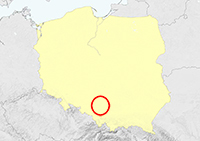 Location:
Location:Jankowice.
Active map with colonies.
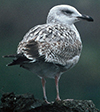 Caspian Gull cachinnans PLG DN 12658 1CY, December 07 2002, Deponie Scharmede, Germany. Picture: Armin Deutsch.
Caspian Gull cachinnans PLG DN 12658 1CY, December 07 2002, Deponie Scharmede, Germany. Picture: Armin Deutsch.Possible hybrid Caspian x Yellow-legged Gull?
 Caspian Gull cachinnans PLG DN 12747 1CY, December 07 2003, Amsterdam, the Netherlands. Picture: Ruud Altenburg & Mars Muusse.
Caspian Gull cachinnans PLG DN 12747 1CY, December 07 2003, Amsterdam, the Netherlands. Picture: Ruud Altenburg & Mars Muusse. Caspian Gull cachinnans PLG DN 21600 2CY & 4CY, February 2008 & February 2010, Deponie Pohlsche Heide - Minden, Germany (52°23'05N, 08°46'45E).
Picture: Armin Deutsch.
Caspian Gull cachinnans PLG DN 21600 2CY & 4CY, February 2008 & February 2010, Deponie Pohlsche Heide - Minden, Germany (52°23'05N, 08°46'45E).
Picture: Armin Deutsch.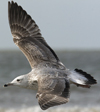 Caspian Gull cachinnans PLG DN 24974 2CY, February & October 2009, Germany & the Netherlands. Picture: Armin Deutsch, Ruud Altenburg & Mars Muusse.
Caspian Gull cachinnans PLG DN 24974 2CY, February & October 2009, Germany & the Netherlands. Picture: Armin Deutsch, Ruud Altenburg & Mars Muusse. Caspian Gull cachinnans 5P16 2CY, June 15 2006, Gloucester landfill site, UK. Picture: John Sanders.
Caspian Gull cachinnans 5P16 2CY, June 15 2006, Gloucester landfill site, UK. Picture: John Sanders. Caspian Gull cachinnans 5P79 2CY, January-March 2007, Deponie Pohlsche Heide - Minden, Germany. Picture: Armin Deutsch.
Caspian Gull cachinnans 5P79 2CY, January-March 2007, Deponie Pohlsche Heide - Minden, Germany. Picture: Armin Deutsch. Larus cachinnans x michahellis hybrid 8P36 1CY, October 20 2005, Goczalkowice Reservoir, S Poland. Picture: Robert Zbronski.
Larus cachinnans x michahellis hybrid 8P36 1CY, October 20 2005, Goczalkowice Reservoir, S Poland. Picture: Robert Zbronski. Caspian Gull cachinnans 8P36 3CY, May 17-23 2007, Łubna landfill, Poland. Picture: Ruud Altenburg.
Caspian Gull cachinnans 8P36 3CY, May 17-23 2007, Łubna landfill, Poland. Picture: Ruud Altenburg. Caspian Gull cachinnans 006P 8CY-9CY male, January 12 2007 & January 06 2008, Woerth, Niederoesterreich, Austria. Picture: Wolfgang Schweighofer.
Caspian Gull cachinnans 006P 8CY-9CY male, January 12 2007 & January 06 2008, Woerth, Niederoesterreich, Austria. Picture: Wolfgang Schweighofer. Originally from Azov Sea, Ukraine.
 Caspian Gull cachinnans 080P 2CY, May 25 2007, Lubna, Poland. Picture: Ruud Altenburg.
Caspian Gull cachinnans 080P 2CY, May 25 2007, Lubna, Poland. Picture: Ruud Altenburg. Caspian Gull cachinnans 089P 1CY, August 23 2006, Stroby ladeplads, Denmark & September 26 2006, Simrishamn, Sweden. Picture: Jörgen Bernsmo & Lars Krogh.
Caspian Gull cachinnans 089P 1CY, August 23 2006, Stroby ladeplads, Denmark & September 26 2006, Simrishamn, Sweden. Picture: Jörgen Bernsmo & Lars Krogh.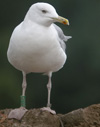 Caspian Gull cachinnans 103P 2CY-5CY, May 2007 - August 2010, Lubna, Poland. Picture: Michal Rycak & Ruud Altenburg.
Caspian Gull cachinnans 103P 2CY-5CY, May 2007 - August 2010, Lubna, Poland. Picture: Michal Rycak & Ruud Altenburg. Caspian Gull cachinnans 113P 2CY, May 17 2007, Łubna landfill, Poland. Picture: Ruud Altenburg.
Caspian Gull cachinnans 113P 2CY, May 17 2007, Łubna landfill, Poland. Picture: Ruud Altenburg. Caspian Gull cachinnans 129P August 04 2006, Deponie Pohlsche Heide - Minden, Germany. Picture: Armin Deutsch.
Caspian Gull cachinnans 129P August 04 2006, Deponie Pohlsche Heide - Minden, Germany. Picture: Armin Deutsch. Caspian Gull cachinnans 140P 2CY, May 09 2007, Simrishamn, Sweden. Picture: Jörgen Bernsmo.
Caspian Gull cachinnans 140P 2CY, May 09 2007, Simrishamn, Sweden. Picture: Jörgen Bernsmo. Caspian Gull cachinnans 149P adult, August 22 2007, Krynica Morska, Poland. Picture: Adam Janczyszyn.
Caspian Gull cachinnans 149P adult, August 22 2007, Krynica Morska, Poland. Picture: Adam Janczyszyn. Caspian Gull cachinnans 184P 3CY, December 24 2009, Wörth, Austria. Picture: Wolfgang Schweighofer.
Caspian Gull cachinnans 184P 3CY, December 24 2009, Wörth, Austria. Picture: Wolfgang Schweighofer.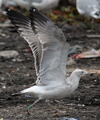 Caspian Gull cachinnans 211P 2CY, October 22 2008, Deponie Pohlsche Heide - Minden, Germany. Picture: Armin Deutsch.
Caspian Gull cachinnans 211P 2CY, October 22 2008, Deponie Pohlsche Heide - Minden, Germany. Picture: Armin Deutsch. Caspian Gull cachinnans 231P 6CY, February 06 2012, Krems, Austria. Picture: Wolfgang Schweighofer.
Caspian Gull cachinnans 231P 6CY, February 06 2012, Krems, Austria. Picture: Wolfgang Schweighofer. Caspian Gull cachinnans 234P 6CY, October 18 2007, Deponie Pohlsche Heide - Minden, Germany. Picture: Armin Deutsch.
Caspian Gull cachinnans 234P 6CY, October 18 2007, Deponie Pohlsche Heide - Minden, Germany. Picture: Armin Deutsch. Caspian Gull cachinnans 254P 1CY, October 28 2008, Deponie Pohlsche Heide - Minden, Germany. Picture: Armin Deutsch.
Caspian Gull cachinnans 254P 1CY, October 28 2008, Deponie Pohlsche Heide - Minden, Germany. Picture: Armin Deutsch.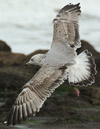 Caspian Gull cachinnans 260P 2CY, October 21-29 2008, Westkapelle, the Netherlands. Picture: Ies Meulmeester & Walther Leers.
Caspian Gull cachinnans 260P 2CY, October 21-29 2008, Westkapelle, the Netherlands. Picture: Ies Meulmeester & Walther Leers. Caspian Gull cachinnans 274P 1CY-2CY, December 2007 - February 2008, Deponie Pohlsche Heide - Minden, Germany. Picture: Armin Deutsch.
Caspian Gull cachinnans 274P 1CY-2CY, December 2007 - February 2008, Deponie Pohlsche Heide - Minden, Germany. Picture: Armin Deutsch. Caspian Gull cachinnans 290P 3CY, August 09 2009, Lakolk strand, Denmark. Picture: Kent Olsen.
Caspian Gull cachinnans 290P 3CY, August 09 2009, Lakolk strand, Denmark. Picture: Kent Olsen. Caspian Gull cachinnans 353P 2CY, January 08 2009, Deponie Pohlsche Heide - Minden, Germany. Picture: Armin Deutsch.
Caspian Gull cachinnans 353P 2CY, January 08 2009, Deponie Pohlsche Heide - Minden, Germany. Picture: Armin Deutsch. Caspian Gull cachinnans 354P 5CY, January 18 2012, Deponie Pohlsche Heide - Minden, Germany.
Picture: Armin Deutsch.
Caspian Gull cachinnans 354P 5CY, January 18 2012, Deponie Pohlsche Heide - Minden, Germany.
Picture: Armin Deutsch. Caspian Gull cachinnans 355P 5CY & 7CY, January 2012 & January 2104, Kent, UK.
Picture: Michael Southcott & Dominic Mitchell.
Caspian Gull cachinnans 355P 5CY & 7CY, January 2012 & January 2104, Kent, UK.
Picture: Michael Southcott & Dominic Mitchell. Caspian Gull cachinnans 365P 2CY, October 22 2009, Deponie Pohlsche Heide - Minden, Germany. Picture: Armin Deutsch.
Caspian Gull cachinnans 365P 2CY, October 22 2009, Deponie Pohlsche Heide - Minden, Germany. Picture: Armin Deutsch. Caspian Gull cachinnans 372P 3CY, February 16 2010, Schachtschleuse - Minden, Germany.
Picture: Armin Deutsch.
Caspian Gull cachinnans 372P 3CY, February 16 2010, Schachtschleuse - Minden, Germany.
Picture: Armin Deutsch. Caspian Gull cachinnans 404P 2CY, December 23 2009, Wörth, Austria. Picture: Wolfgang Schweighofer.
Caspian Gull cachinnans 404P 2CY, December 23 2009, Wörth, Austria. Picture: Wolfgang Schweighofer. Caspian Gull cachinnans 415P 2CY, October 22 2009, Barneveld, the Netherlands. Picture: PieterGeert Gelderblom.
Caspian Gull cachinnans 415P 2CY, October 22 2009, Barneveld, the Netherlands. Picture: PieterGeert Gelderblom. Caspian Gull cachinnans 424P 2CY, December 24 2009, Wörth, Austria. Picture: Wolfgang Schweighofer.
Caspian Gull cachinnans 424P 2CY, December 24 2009, Wörth, Austria. Picture: Wolfgang Schweighofer. Caspian Gull cachinnans 430P 2CY, January 26 2009, Vidy/Lausanne, lac Léman, Switzerland. Picture: Michel Gorgerat.
Caspian Gull cachinnans 430P 2CY, January 26 2009, Vidy/Lausanne, lac Léman, Switzerland. Picture: Michel Gorgerat. Caspian Gull cachinnans 437P adult, May 06 2013, Gatovo - Minsk, Belarus. Picture: Dmitry Goncharov.
Caspian Gull cachinnans 437P adult, May 06 2013, Gatovo - Minsk, Belarus. Picture: Dmitry Goncharov. Caspian Gull cachinnans 443P 1CY, November 06 2008, Deponie Pohlsche Heide - Minden, Germany. Picture: Armin Deutsch.
Caspian Gull cachinnans 443P 1CY, November 06 2008, Deponie Pohlsche Heide - Minden, Germany. Picture: Armin Deutsch.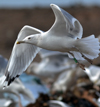 Caspian Gull cachinnans 455P 4CY, October 28-30 2011, Deponie Pohlsche Heide - Minden, Germany.
Picture: Armin Deutsch.
Caspian Gull cachinnans 455P 4CY, October 28-30 2011, Deponie Pohlsche Heide - Minden, Germany.
Picture: Armin Deutsch. Caspian Gull cachinnans 467P 2CY, December 24 2009, Wörth, Austria. Picture: Wolfgang Schweighofer.
Caspian Gull cachinnans 467P 2CY, December 24 2009, Wörth, Austria. Picture: Wolfgang Schweighofer. Caspian Gull cachinnans 531P 2CY, May 21 2003, Lubna, Poland. Picture: Ruud Altenburg.
Caspian Gull cachinnans 531P 2CY, May 21 2003, Lubna, Poland. Picture: Ruud Altenburg. Caspian Gull cachinnans 536P 2CY, February - April 2003, CET Tiercé & Lac de Maine, Angers, France. Picture: Alain Fossé.
Caspian Gull cachinnans 536P 2CY, February - April 2003, CET Tiercé & Lac de Maine, Angers, France. Picture: Alain Fossé. Caspian Gull cachinnans 671P 6CY & 8CY, October 2008, September & November 2010, Boulogne-sur-Mer, NW France, Picture: Jean-Michel Sauvage.
Caspian Gull cachinnans 671P 6CY & 8CY, October 2008, September & November 2010, Boulogne-sur-Mer, NW France, Picture: Jean-Michel Sauvage. Caspian Gull cachinnans P637 adult, February 19 2015, Alphen aan de Rijn, the Netherlands. Picture: Merijn Loeve.
Caspian Gull cachinnans P637 adult, February 19 2015, Alphen aan de Rijn, the Netherlands. Picture: Merijn Loeve. Larus cachinnans 6CY-8CY 671P October 2008, September & November 2010, Boulogne-sur-Mer, NW France, Picture: Jean-Michel Sauvage.
Larus cachinnans 6CY-8CY 671P October 2008, September & November 2010, Boulogne-sur-Mer, NW France, Picture: Jean-Michel Sauvage. Caspian Gull cachinnans 674P March 28 2013, Minsk, Belarus. Picture: Dmitry Goncharov.
Caspian Gull cachinnans 674P March 28 2013, Minsk, Belarus. Picture: Dmitry Goncharov. Caspian Gull cachinnans 916P adult, January 28 2010, Wörth, Austria. Picture: Wolfgang Schweighofer.
Caspian Gull cachinnans 916P adult, January 28 2010, Wörth, Austria. Picture: Wolfgang Schweighofer. Caspian Gull cachinnans 929P adult, November 08 2007, Deponie Pohlsche Heide - Minden, Germany (52°23'05N, 08°46'45E).
Picture: Armin Deutsch.
Caspian Gull cachinnans 929P adult, November 08 2007, Deponie Pohlsche Heide - Minden, Germany (52°23'05N, 08°46'45E).
Picture: Armin Deutsch. Caspian Gull cachinnans 949P 7CY, January 06 2010, Deponie Pohlsche Heide - Minden, Germany.
Picture: Armin Deutsch.
Caspian Gull cachinnans 949P 7CY, January 06 2010, Deponie Pohlsche Heide - Minden, Germany.
Picture: Armin Deutsch. Caspian Gull cachinnans P691 adult, April 2001, Jankowice Babice Malopolskie, Poland. Picture: Michal Rycak.
Caspian Gull cachinnans P691 adult, April 2001, Jankowice Babice Malopolskie, Poland. Picture: Michal Rycak. Caspian Gull cachinnans PAAC 6CY-7CY male, January 2011 & January 2012, Boulogne-sur-Mer, France, Picture: Jean-Michel Sauvage.
Caspian Gull cachinnans PAAC 6CY-7CY male, January 2011 & January 2012, Boulogne-sur-Mer, France, Picture: Jean-Michel Sauvage. Caspian Gull cachinnans PAAT adult, January 2013, Lake of Constance, Switzerland. Picture: Stephan Trösch.
Caspian Gull cachinnans PAAT adult, January 2013, Lake of Constance, Switzerland. Picture: Stephan Trösch. Caspian Gull cachinnans PACX 2CY-4CY, September 2010 - March 2012, Deponie Pohlsche Heide - Minden, Germany.
Picture: Armin Deutsch.
Caspian Gull cachinnans PACX 2CY-4CY, September 2010 - March 2012, Deponie Pohlsche Heide - Minden, Germany.
Picture: Armin Deutsch. Caspian Gull cachinnans PACZ 1CY, October - November 2009, Deponie Pohlsche Heide - Minden, Germany. Picture: Armin Deutsch.
Caspian Gull cachinnans PACZ 1CY, October - November 2009, Deponie Pohlsche Heide - Minden, Germany. Picture: Armin Deutsch. Caspian Gull cachinnans PADA 2CY, March 13 2010, Penketh Cheshire, Great Britain. Picture: P Kinsella.
Caspian Gull cachinnans PADA 2CY, March 13 2010, Penketh Cheshire, Great Britain. Picture: P Kinsella. Caspian Gull cachinnans PAEN 2CY, January 06 2010, Vienna, Austria. Picture: Wolfgang Schweighofer.
Caspian Gull cachinnans PAEN 2CY, January 06 2010, Vienna, Austria. Picture: Wolfgang Schweighofer. Caspian Gull cachinnans PAHP 1CY-2CY, October 2009 & March 2010, France & Belgium. Picture: Franck Salmon & Peter Adriaens.
Caspian Gull cachinnans PAHP 1CY-2CY, October 2009 & March 2010, France & Belgium. Picture: Franck Salmon & Peter Adriaens. Caspian Gull cachinnans PAKL 2CY, March 03 2010, Deponie Pohlsche Heide - Minden, Germany. Picture: Armin Deutsch.
Caspian Gull cachinnans PAKL 2CY, March 03 2010, Deponie Pohlsche Heide - Minden, Germany. Picture: Armin Deutsch. Caspian Gull cachinnans PALK 4CY, February 19 2012, Zagreb, Croatia. Picture: Ruud Altenburg.
Caspian Gull cachinnans PALK 4CY, February 19 2012, Zagreb, Croatia. Picture: Ruud Altenburg. Caspian Gull cachinnans PANU 2CY,April 20 2010, Lubna, Poland. Picture: Michal Rycak.
Caspian Gull cachinnans PANU 2CY,April 20 2010, Lubna, Poland. Picture: Michal Rycak. Caspian Gull cachinnans PANX 1CY & 3CY PANX August & October 2009, Deponie Pohlsche Heide - Minden, Germany & December 2012, Herstal - Liege, Belgium.
Caspian Gull cachinnans PANX 1CY & 3CY PANX August & October 2009, Deponie Pohlsche Heide - Minden, Germany & December 2012, Herstal - Liege, Belgium.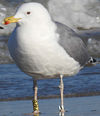 Caspian Gull cachinnans PAPB 1CY, 3CY & 8CY, October 2009, January 2011 & February 2016, the Netherlands & Great Britain.
Caspian Gull cachinnans PAPB 1CY, 3CY & 8CY, October 2009, January 2011 & February 2016, the Netherlands & Great Britain. Caspian Gull cachinnans PAPP 1CY, August 28 2009, Windheim - Minden, Germany. Picture: Armin Deutsch.
Caspian Gull cachinnans PAPP 1CY, August 28 2009, Windheim - Minden, Germany. Picture: Armin Deutsch.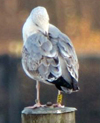 Caspian Gull cachinnans PATC 2CY & 4CY, December 2010 & February 2012, Lake of Constance - Rorschach, Switzerland. Picture: Stephan Trösch & Verena Döbelin.
Caspian Gull cachinnans PATC 2CY & 4CY, December 2010 & February 2012, Lake of Constance - Rorschach, Switzerland. Picture: Stephan Trösch & Verena Döbelin. Caspian Gull cachinnans PATL 1CY, November 21 2009, Lubna, Poland. Picture: Michal Rycak.
Caspian Gull cachinnans PATL 1CY, November 21 2009, Lubna, Poland. Picture: Michal Rycak. Caspian Gull cachinnans PATN 1CY & 3CY, November 2009 & March 2011, Germany & Switzerland.
Picture: Armin Deutsch & Michel Gorgerat.
Caspian Gull cachinnans PATN 1CY & 3CY, November 2009 & March 2011, Germany & Switzerland.
Picture: Armin Deutsch & Michel Gorgerat. Caspian Gull cachinnans PAUS 1CY & 3CY, October 12 2009 & December 2011, Sweden & Poland. Picture: Mats Rellmar & Michal Polakowski.
Caspian Gull cachinnans PAUS 1CY & 3CY, October 12 2009 & December 2011, Sweden & Poland. Picture: Mats Rellmar & Michal Polakowski. Caspian Gull cachinnans PDBA adult, November 2010 - December 2012, Deponie Pohlsche Heide - Minden, Germany.
Picture: Armin Deutsch.
Caspian Gull cachinnans PDBA adult, November 2010 - December 2012, Deponie Pohlsche Heide - Minden, Germany.
Picture: Armin Deutsch. Caspian Gull cachinnans PEHH 1CY-2CY, October 2011 & June 2012, Deponie Pohlsche Heide - Minden, Germany (52°23'05N, 08°46'45E). Picture: Armin Deutsch.
Caspian Gull cachinnans PEHH 1CY-2CY, October 2011 & June 2012, Deponie Pohlsche Heide - Minden, Germany (52°23'05N, 08°46'45E). Picture: Armin Deutsch. Caspian Gull cachinnans PEHV 4CY, January 10 2014, Oostende, Belgium.
Picture: Roland Francois.
Caspian Gull cachinnans PEHV 4CY, January 10 2014, Oostende, Belgium.
Picture: Roland Francois. Caspian Gull cachinnans PELZ 1CY-2CY, September-October 2011 & August 2012, Deponie Pohlsche Heide - Minden, Germany. Picture: Armin Deutsch.
Caspian Gull cachinnans PELZ 1CY-2CY, September-October 2011 & August 2012, Deponie Pohlsche Heide - Minden, Germany. Picture: Armin Deutsch. Caspian Gull cachinnans PESC 2CY, February - March 2012, W. France. Picture: Alain Fossé & David Madiot.
Caspian Gull cachinnans PESC 2CY, February - March 2012, W. France. Picture: Alain Fossé & David Madiot. Caspian Gull cachinnans PESV 2CY & 10CY, December 2012, Belgium & April - May 2020, the Netherlands. Picture: Jan Baert & Mars Muusse.
Caspian Gull cachinnans PESV 2CY & 10CY, December 2012, Belgium & April - May 2020, the Netherlands. Picture: Jan Baert & Mars Muusse.Now breeding bid in the Netherlands (2019 & 2020).
 Caspian Gull cachinnans PETC 1CY, October 28 2011, Deponie Pohlsche Heide - Minden, Germany. Picture: Armin Deutsch.
Caspian Gull cachinnans PETC 1CY, October 28 2011, Deponie Pohlsche Heide - Minden, Germany. Picture: Armin Deutsch. Caspian Gull cachinnans PEVP 2CY-3CY, February 2012 & October 2013, the Netherlands. Picture: Willem-Jan Fontijn & Maarten van Kleinwee.
Caspian Gull cachinnans PEVP 2CY-3CY, February 2012 & October 2013, the Netherlands. Picture: Willem-Jan Fontijn & Maarten van Kleinwee. Caspian Gull cachinnans PEXT 2CY-3CY, January 2012 & January 2013, Lake of Constance - Rorschach, Switzerland. Picture: Stephan Trösch.
Caspian Gull cachinnans PEXT 2CY-3CY, January 2012 & January 2013, Lake of Constance - Rorschach, Switzerland. Picture: Stephan Trösch. Caspian Gull cachinnans PEZV 1CY & 3CY, December 2011 & January 2013, Deponie Pohlsche Heide - Minden, Germany.
Picture: Armin Deutsch.
Caspian Gull cachinnans PEZV 1CY & 3CY, December 2011 & January 2013, Deponie Pohlsche Heide - Minden, Germany.
Picture: Armin Deutsch. Caspian Gull cachinnans PHBD 2CY, February 19 2012, Zagreb, Croatia. Picture: Mars Muusse & Ruud Altenburg.
Caspian Gull cachinnans PHBD 2CY, February 19 2012, Zagreb, Croatia. Picture: Mars Muusse & Ruud Altenburg. Caspian Gull cachinnans PHBH 2CY, 19 February 2012, Zagreb, Croatia. Picture: Mars Muusse.
Caspian Gull cachinnans PHBH 2CY, 19 February 2012, Zagreb, Croatia. Picture: Mars Muusse. Caspian Gull cachinnans PHDK 1CY, November 19 2011, Normandy, France. Picture: Tony Le Huu Nghia.
Caspian Gull cachinnans PHDK 1CY, November 19 2011, Normandy, France. Picture: Tony Le Huu Nghia. Caspian Gull cachinnans PHDL 4CY, April 24 2014, Zastow Karczmiski, Poland. Picture: Łukasz Bednarz.
Caspian Gull cachinnans PHDL 4CY, April 24 2014, Zastow Karczmiski, Poland. Picture: Łukasz Bednarz.Breeding season 2014 (4CY) at colony Zastow Karczmiski.
 Caspian Gull cachinnans PHEB 2CY, December 13 2012, Oss, the Netherlands. Picture: Lützen Portengen.
Caspian Gull cachinnans PHEB 2CY, December 13 2012, Oss, the Netherlands. Picture: Lützen Portengen.  Caspian Gull cachinnans PHEE 4CY, April 14 2014, Łęczna landfill, Poland. Picture: Łukasz Bednarz.
Caspian Gull cachinnans PHEE 4CY, April 14 2014, Łęczna landfill, Poland. Picture: Łukasz Bednarz. Caspian Gull cachinnans PHEN 1CY, October & November 2011, Deponie Pohlsche Heide - Minden, Germany. Picture: Armin Deutsch.
Caspian Gull cachinnans PHEN 1CY, October & November 2011, Deponie Pohlsche Heide - Minden, Germany. Picture: Armin Deutsch. Caspian Gull cachinnans PHPT 3CY, October 12 2013, Werkendam, the Netherlands. Picture: Merijn Loeve.
Caspian Gull cachinnans PHPT 3CY, October 12 2013, Werkendam, the Netherlands. Picture: Merijn Loeve. Caspian Gull cachinnans PHPU 2CY, February 19 2012, Zagreb, Croatia. Picture: Mars Muusse & Ruud Altenburg.
Caspian Gull cachinnans PHPU 2CY, February 19 2012, Zagreb, Croatia. Picture: Mars Muusse & Ruud Altenburg. Caspian Gull cachinnans PLPB 2CY, March 03-15 2013, River Loire, Maine-et-Loire, France. Picture: Alain Fossé & Francky Recoquillon.
Caspian Gull cachinnans PLPB 2CY, March 03-15 2013, River Loire, Maine-et-Loire, France. Picture: Alain Fossé & Francky Recoquillon. Caspian Gull cachinnans PLSX 2CY, January 2013, Lake of Constance, Switzerland. Picture: Stephan Trösch.
Caspian Gull cachinnans PLSX 2CY, January 2013, Lake of Constance, Switzerland. Picture: Stephan Trösch.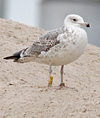 Caspian Gull cachinnans PLVC 2CY, December 28 2013, Herstal, Belgium. Picture: Robin Gailly.
Caspian Gull cachinnans PLVC 2CY, December 28 2013, Herstal, Belgium. Picture: Robin Gailly.  Caspian Gull cachinnans PLVE 1CY-3CY, December 2012 - February 2014, Utrecht & Amsterdam, Noordzee, Terschelling, the Netherlands.
Caspian Gull cachinnans PLVE 1CY-3CY, December 2012 - February 2014, Utrecht & Amsterdam, Noordzee, Terschelling, the Netherlands.  Caspian Gull cachinnans PLVS 2CY, March 04 2013, Jakuševec-Zagreb, Croatia. Picture: ringing team Luka Jurinovic.
Caspian Gull cachinnans PLVS 2CY, March 04 2013, Jakuševec-Zagreb, Croatia. Picture: ringing team Luka Jurinovic. Caspian Gull cachinnans PLZX 2CY, February 11 2013, Lake of Constance - Altenrhein, Switzerland. Picture: Stephan Trösch.
Caspian Gull cachinnans PLZX 2CY, February 11 2013, Lake of Constance - Altenrhein, Switzerland. Picture: Stephan Trösch. Caspian Gull cachinnans P:1J3 1CY, October 07 2019, Barneveld waste dump, the Netherlands. Picture: Mars Muusse.
Caspian Gull cachinnans P:1J3 1CY, October 07 2019, Barneveld waste dump, the Netherlands. Picture: Mars Muusse. Caspian Gull cachinnans P:4J9 2CY, October 23 2020, Katwijk beach, the Netherlands. Picture: Mars Muusse.
Caspian Gull cachinnans P:4J9 2CY, October 23 2020, Katwijk beach, the Netherlands. Picture: Mars Muusse.